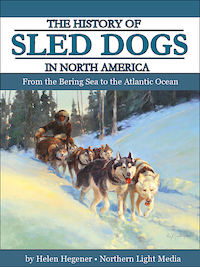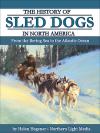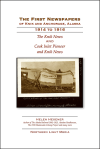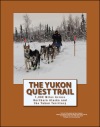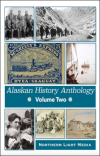
Golden Places: The History of Alaska-Yukon Mining, With Particular Reference to Alaska’s National Parks, was written in 1990 by William R. Hunt, prepared as a special theme study to assist in the assessment of cultural resources associated with metal mining in Alaska’s national parks. Designed to focus on mineral discovery and development in the national parks, its first chapters explore the earliest prospecting efforts in the north country, through the Klondike Gold Rush years. From the first Cassiar discovery in the Stikine River country in 1862, through gold discoveries at Sitka, Juneau, Yakutat, the Fortymile country, the Circle Mining District, the stampede to Nome, the Nabesna and Nizina gold strikes, strikes at Kantishna, Kuskokwim, and the stampede to Iditarod, the complete history of gold in Alaska and the Yukon is presented clearly with a gold mining chronology.

Teams freighting to Chisana
The book, which is available free to read online, is divided into 18 chapters which detail the history with in-depth descriptions and fascinating details, such as this from chapter 12: “In February 1914 Chisana folks argued that their community had more log cabins than Circle, Fairbanks, or Dawson and deserved to be called ‘the largest log cabin town in the world.’ Four hundred cabins was one estimate, including seven general stores, a saloon, two restaurants, a clothing store, and ‘roadhouses galore.'”

Iditarod
There is a brief but good description of the history of the Iditarod Trail, shared here in full: “The Seward-Nome Trail, famed today as the Iditarod Trail because of annual dog-sled races from Anchorage to Nome, was never a major long-distance route. It consisted of a number of winter trails that had developed in the early prospecting days that were linked in 1910. When the upper Innoko strike attracted miners from Cook Inlet and elsewhere in 1906, a trail to tidewater appeared beneficial. In February 1908 the Alaska Road Commission began a survey of a new trail from Seward to Nome. After a Christmas strike on Otter Creek by prospectors W.A. Dikeman and John Beaton, the boom town of Iditarod developed. Over the winter of 1910 the Alaska Road Commission marked and cleared 1,000 miles of trail from Kern Creek, on the Alaska Northern railroad 71 miles north of Seward, to Nome. Some portions of the trail were new and some had been used by prospectors or natives earlier. The Seward-Knik section became a mail and supply route until the railroad was extended, and the Knik-Kaltag section was much used from 1910-20. Other portions of the wide winter trail network were used as needed, then abandoned when conditions changed.”
Detailed maps, charts, photographs and extensive notes and bibliographies at the end of each chapter make this book an outstanding online research tool, but also an enjoyable contribution to the history of Alaska for the more casual reader. An observation from the last chapter: “Alaska’s hunters, trappers, dog mushers, and hikers have a certain respect for those early miners. It required travel skills and a spirit of adaptation that is generally admired by Alaskans who have a particular sensitivity to their natural environment.”

